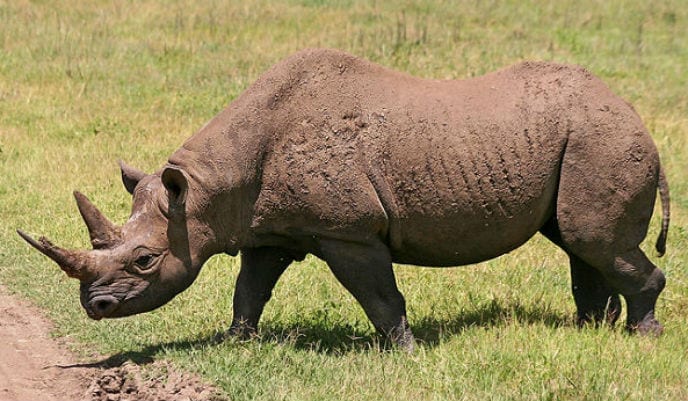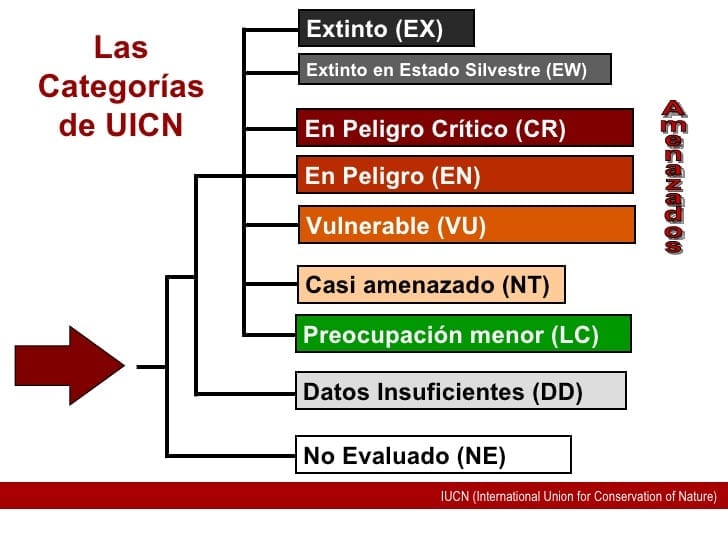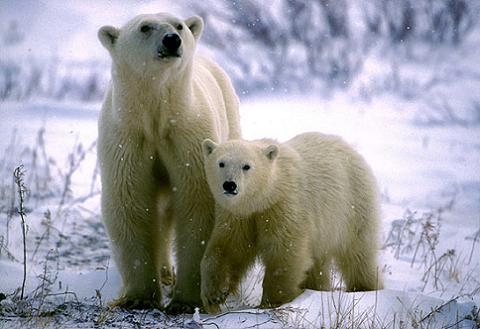
The human being throughout history has caused many impacts on the planet. The impacts have been more notable and important, becoming some irreversible, after the industrial revolution. Concern about the negative effects that man causes on the environment arises from the degradation of ecosystems, loss of biodiversity, air, water and soil pollution and the depletion of natural resources.
Added to this concern for the environment is the already existing concern for health and well-being, increasing the quality of life and guaranteeing a good life expectancy. These conditions are affected by economic and urban development of the human being, in which economic activities cause impacts on natural resources, flora and fauna.
Environmental impacts on ecosystems
Of the need for protect the planet's biodiversity and maintain the functionality of ecosystems as we know them, threat categories arise for the different species of flora and fauna found in danger of extinction or whose population is in decline. From the moment that human beings begin to carry out their economic activities such as the exploitation of resources (hydrological, mining, agriculture, etc.), certain impacts are produced on ecosystems. These impacts cause effects on the flora and fauna existing in those places that lead to the alteration of their way of life. For example, agriculture causes fragmentation in ecosystems, road construction causes loss of continuity in habitats, etc.
These impacts make the flora and fauna unable to adapt to normal living conditions when new scenarios appear. The search for food and water becomes difficult, new diseases are born, displacement and the search for hiding from predators becomes more difficult ... All this means that many species cannot adapt well to these new living conditions caused by the activities of being human, and, unfortunately, they cannot survive, causing a decrease in populations.
Ecosystems are complex networks of connections between species that exchange energy in a stable way called ecological balance. By affecting this ecological balance, populations are decreasing, and depending on the number of relationships that exist in the ecosystem, the more vulnerable it will be to total degradation. An ecosystem with few species is very vulnerable to human and natural impacts. Animal and plant populations that decrease below a threshold are categorized as "in danger of extinction".
Work prior to threat categorization
In order to talk about categories of threat in animal and plant populations, we must first analyze the state of conservation of the ecosystem and of these species. The conservation status is known as the probability that a species will continue to exist in the present or in the not too distant future. To do this, the currently existing population of a certain species and its trend over time must be analyzed. In this way, their population can be predicted in the near future, as long as the conditions to which they are subjected remain stable. If there are new predators or other threats (including human impacts) that can modify their habitat and living conditions, it will be necessary to analyze how the species will evolve in such situations.
How did the threat categories emerge?
The categories of threat to flora and fauna emerged from their classification. In the middle of the XNUMXth century Linnaeus published a method to classify all living things. These are the taxonomic categories and some 1,4 million species. Vertebrate animals, due to their greater knowledge, are used as biological indicators and, in general, the greatest conservation efforts are devoted to them.

Linnaeus. Source http://www. talesdedoncoco.com/2013/02/biografia-de-carl-von-linneo-resumen.html
Due to the ecological balance mentioned above, in order to conserve vertebrates, their trophic requirements and their habitat dependencies must be studied. That is why it must be guaranteed the good state of conservation of ecosystems In which they live and must also conserve the species of flora and fauna on which they depend, in order to preserve the ecological balance that keeps them stable.
Evaluation criteria for species protection
In order to classify the species according to their degree of threat, various tests are carried out on the populations of the taxon under study to assign it the threat category or treat it as not threatened.
- Criterion A it is based on the study of the reduction of the number of mature individuals in a set time.
- Criterion B studies the geographic distribution of populations that are reduced depending on the extent of the presence of the species and the area of occupation that the individuals actually cover.
- Criterion C it is based on the number of mature individuals in continuous decline due to the impacts that are caused on ecosystems.
- Criterion D is the total number of mature individuals that exist in the habitat.
- Criterion E analyzes the probability of extinction in a percentage of individuals per unit of time.
If a species is found to no longer meet the criteria for which it was considered threatened, it should normally be assessed against other criteria and not removed from the list.

The rhinoceros is in danger of extinction
Threat categories according to IUCN
There are many ways to classify animals whose populations are detrimental. The best known are the threat categories established by the International Union for Conservation of Nature (IUCN). The IUCN compiles the species that suffer some type of threat in the known red books y red lists.
For a taxon to be threatened, it suffices that it meets only one of the criteria listed above. These are the threat categories according to the IUCN:
-Extinct (EX): There is no doubt about the disappearance of the last individual.
-Extinct in the wild (EW): It only survives in crops or in seed banks and laboratories.
-Critically Endangered (CR): Extremely high risk of extinction, meeting any criteria after a study of the species and including it in the red list. For a species to be critically endangered, it must comply with the following:
- Its population is reduced by 80-90% of individuals in 10 years or 3 generations.
- Its total extension is less than 100 km2 or its occupation less than 10 km2.
- The number of mature individuals is less than 50.
- The probability of extinction is 50% in 10 years and 3 generations.
-Endangered (EN): Very high risk of extinction. Today there are many species around the world that are in danger of extinction. To be considered endangered, you must comply with the following:
- Its population is reduced by 50-70% of individuals in 10 years or 3 generations
- Its extension area is less than 5.000 km2 and its occupation of 500 km2.
- The number of mature individuals is less than 250.
- The probability of its extinction is 20% in 20 years or 5 generations.
-Vulnerable (VU): High extinction risk. A vulnerable species is not in danger of extinction, but due to its situation, way of life or exposure to different impacts and human activities, its population is reduced. For a species to be considered vulnerable, it must comply with the following:
- Its population is reduced by 30-50% of individuals in 10 years or 3 generations.
- Its extension area is less than 20.000 km2 and its occupation is less than 2.000 km2.
- The total number of mature individuals is less than 1.000.
- The probability of extinction of the species is 10% in 100 years.
-Near Threatened (NT): It does not meet any of the criteria but is very close to meeting it.
-Least Concern (LC): They are abundant taxa with a relatively wide distribution. They are usually monitored in some way to determine if their populations are declining over time.
-Insufficient data (DD): There is not enough information to assess but it could be threatened. Today there are many species, especially marine, for which there is insufficient data to be able to establish categories of threat. They are difficult to study due to their range and their complexity in accessing their habitats.
-Not evaluated (NE): It has not been evaluated but could be threatened.

Threat categories according to the IUCN. Source: http://es.slideshare.net/acatenazzi/proceso-lista-roja-uicn
Threatened species should be evaluated periodically (especially those that are near threatened). The use of these categories on a regional scale is important for larger populations.
For there to be an obligation to protect animal and plant species, there must be binding legislation. In Europe it has developed the Habitats Directive 92/43 CEE. With it, a network of protected natural areas has been created at the European level called the Natura 2000 Network. Its management and conservation objective is to protect the ecosystems where threatened species live. In Spain it is Law 42/2007 on natural heritage and biodiversity the one in charge of protecting flora and fauna.

Together we can make species like the polar bear not endangered
As you can see, it is vitally important to protect ecosystems in order to safeguard the living conditions of animal and plant species. Thanks to current legislation and the efforts of many environmental organizations great results are being achieved in the protection of species that are in danger of extinction. Although still the work that remains to be done is enormous since each time the world's biodiversity is losing species at an inexorable rate.
